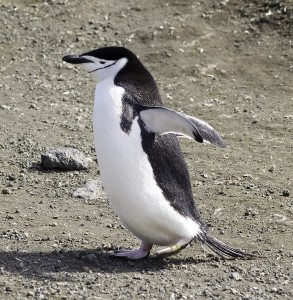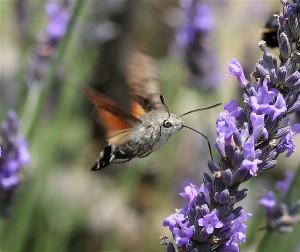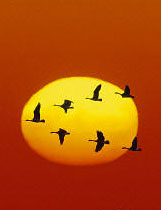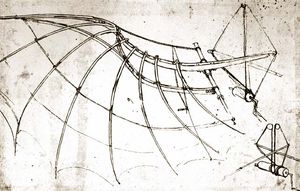October 3, 2012 at 2:57 pm
Having both predators on the dangerous forest floors all the way up to the perilous canopies, Draco lizards make a tasty treat to those predators that catch it. Being towards the lower end of

Draco lizard, National Geographic
the food chain these little creatures have to overcome various dangers just to survive. If only they could just fly away and leave all their troubles behind. Well, they aren’t called Draco lizards for nothing. Just like its tr
d. anslation, the flying dragon, the little guy earned the name of Draco Lizard because this lizard is a mythical dragon that flies away and breathes fire. Not exactly. Instead of flying, the Draco Lizard actually glides instea
These gliding dragons, glide far and wide as their method of escaping predators, searching for food, finding mates, and defending their territory. Now you may be wonderingAs for it breathing fire part though, I’ll just have to leave that for your imagination.
Read More »
By Andrés
|
Posted in Student post
|
Tagged draco, gliding, lizards
|
October 2, 2012 at 7:50 pm
 Flies are almost impossible to catch. Anyone who has waved a fly swatter around, desperately hoping to hit one, will agree. Flies are very fast, but perhaps it isn't the speed that tricks the desperate human, but rather the remarkable capability for a fly to turn 90° in about 50-thousandths of a second.
Flies are almost impossible to catch. Anyone who has waved a fly swatter around, desperately hoping to hit one, will agree. Flies are very fast, but perhaps it isn't the speed that tricks the desperate human, but rather the remarkable capability for a fly to turn 90° in about 50-thousandths of a second.
Already, these disgusting little creatures are overcoming impossible aerodynamic forces, their wings beat over 2000 beats per second just to stay aloft.
Initially, it was believed, flies turned very differently from larger fliers like birds or planes, but in reality, flies use the same speed-up-turn-speed-up sequence. However, unlike planes, flies don't rely on drag to change course.
Instead, they use their incredible muscles to pull themselves about.
Read More »
By jnquinn
|
Posted in Student post
|
Tagged fly, insects
|
September 30, 2012 at 11:57 pm
Okay, we've all seen birds fly before. But how many of us have seen those birds fly backwards? Hummingbirds are unique because they are able to fly in almost all directions, including backwards! This one of a kind utility is rare among birds but is common among insects. How do hummingbirds do it? What allows hummingbirds to execute flying maneuvers that other flying birds can't?
Read More »
By samjung
|
Posted in Student post
|
September 30, 2012 at 8:53 pm

Still can't fly
Normally you don't see flying and fish in the same phrase. How can an animal that spends all of its time in the water have the ability to fly? There are even species of birds that don't have the gift of flight (sorry, penguins), so how can fish fly? In fact, scientists have discovered over 60 species of fish that can take the skies.
Read More »
By Jeff Chen
|
Posted in Student post
|
Tagged flying fish, gliding
|
September 30, 2012 at 4:31 pm
The albatross is one of nature’s most interesting creatures. They seem to fly for hours and hours and yet they only flap their wings on rare occasions. The instinct and evolutionary advantage that permits the albatross to decrease the flapping needed to stay in flight is called Dynamic Soaring. The albatross is perhaps the most famous example among nature’s creatures to use and apply this flying technique.
Read More »
By azubilla
|
Posted in Student post
|
Tagged albatross, bio aerial engineering, birds, dynamic soaring, flight, flying
|
September 29, 2012 at 2:00 am
Have you ever wondered how birds can switch from barreling forward at full speed to gently touching down on a target as narrow as a telephone wire? And, how can we use this to improve the way our planes land? These are the topics that are going to be covered within this article.
Read More »
By eacoyle
|
Posted in Student post
|
Tagged birds, flying, gliding, landing, robot
|
September 28, 2012 at 8:31 pm

The Hummingbird Hawkmoth
In every class of animals, there are species that push the limits of what their genetic family can do. The peregrine falcon can dive at speeds of up to 200mph. Cheetahs can run up to 70 mph. Insects also have an exceptional species within their ranks, the hawk moth. The hawk moth can fly 12mph at top speed, faster than many birds.
Read More »
By mkasper
|
Posted in Student post
|
Tagged flying, hawkmoth, insects
|
September 28, 2012 at 2:25 pm
Butterflies can look like simple animals with complicated patterns, they softly flit through the air selecting nectar filled flowers for their daily meals, And while these gentile fliers are by no means tough, their wings are more than twice as effective than a bird's. Read More »
By jnquinn
|
Posted in Student post
|
Tagged butterfly, insects, vortices
|
September 28, 2012 at 11:22 am

Geese flying in a V formation
Migratory birds have many flight formations, called echelons. Each have their own set of advantages. The most common of these is the V shaped formation, which can be called a Skein. Anyone who sees a flight of migrating geese will see its distinct shape.
This flight pattern provides the birds with two main advantages. The most obvious being that since each bird is slightly behind the next, all of the birds can see the lead bird, and the bird immediately in front and to the side, allowing them to coordinate their flight paths and not crash into each other or get lost. This is the primary reason that fighter jets also fly in formation. The only real difference being that they also do this to increase their fields of view and defensive ability.
Read More »
By lneves
|
Posted in Student post
|
Tagged birds, migration, v-formation, vortices
|
September 27, 2012 at 7:01 pm
It is no surprise that humanity’s first attempts at human powered flight were based on birdlike structures. The first proposed reasonable flying device was proposed by the prodigious artist and engineer Leonardo Da Vinci in 1490 and consisted of a giant bat-looking aircraft that used the pilot’s arms and legs to power the wings.

However, "human-powered wing-falpping flight" is such a complex concept, that engineers have not yet been able to completely master it.
For centuries scientists have made multiple efforts to achieve this feat, yet the only successful attempt was made in 2010 by Todd Reichert, an engineering PhD candidate at the University of Toronto Institute for Aerospace Studies (UTIAS). His qualified team was able to design a flapping aircraft that sustained flight for 19.3 seconds over an altitude of 475 feet “achieving the age-old aeronautical dream of self-powered flapping wing flight.”
Read More »
By Maria Fernanda Torres
|
Posted in Student post
|
Tagged flying, ornithopter
|




